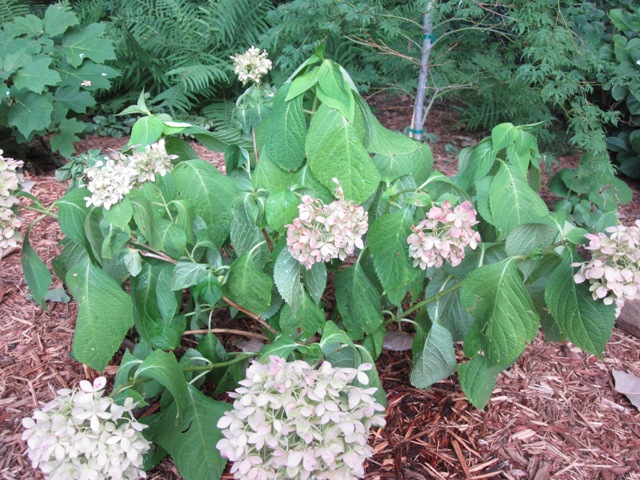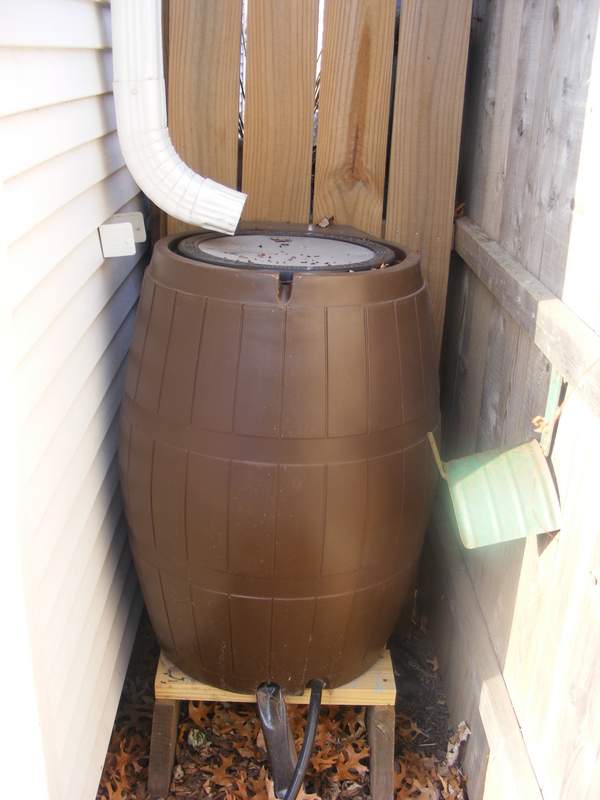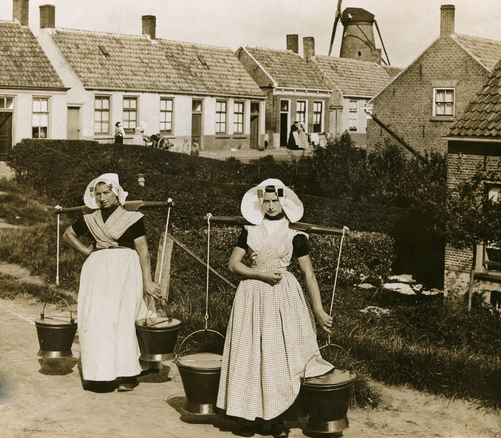Right as rain! Or, as we say around here, “left” as rain!
– Ned Flanders
I originally named this post “What Hippies Don’t Want You to Know About Rain Barrels” but I didn’t want to attract real-life Cartman types.
The Kev and I certainly have some hippified leanings. Our rain barrels are part of that — we are harvesting the natural water from the bountiful sky to provide for the flowers that sustain the birds and butterflies! It’s all part of the beautiful, ever-turning wheel of the universe!
Yeah, it is.
Until you realize…that water ain’t gonna move itself.
Just because you save up 55 gallons of water in a barrel doesn’t mean the plants that need it are anywhere nearby. Commercially produced rain barrels come with a fairly short hose for filling up watering cans and buckets to take the water to the plants.
Gardeners often want to set up a rain barrel to provide trickle irrigation to a sizable area by hooking up a longer line. I asked my sister-in-law Mary (a professional landscaper and lifelong gardener) if she thought this technique could work in any sort of reliable way.
“Sure,” she said, “if you’re a WIZARD.”
Rain barrels are generally elevated slightly to help maintain pressure when you are emptying the barrel into buckets and watering cans. A single, elevated barrel will have good pressure for at least the first half of a full barrel — unscientifically, it seems about like a bathroom faucet on nearly full. But that goes by quickly, leaving diminishing pressure for the second half of the supply. (You can add a solar-powered pump, but that has its own prerequisites, including “is my rain barrel in the sun?”)
Using a trickle hose or series of sprinklers, the pressure needs to be constant to provide water to the end of the run (as it is when supplied from an outside faucet). I contacted my engineer brother (a/k/a Angry Dad) for a formula to show the hows and whys. He replied:
 Yeah, it has to do with internal friction of the pipe, liquid pressure/density and some other factors. You would need a reference book to get the hose information.
Yeah, it has to do with internal friction of the pipe, liquid pressure/density and some other factors. You would need a reference book to get the hose information.
That’s more work than I’m going to do for y’all, sorry. You’ll just have to trust my experience when I say that barrel water runs out fast and doesn’t have enough pressure to make it all the way to the end of the run for long.
(Some folks link a series of barrels from a single downspout. This technique can provide more water for gravity-driven irrigation. The bigger the cache, the better, but there are safety issues with large cisterns, and aesthetic reasons to avoid a stack of barrels next to your house. I’m not THAT much of a hippie.)
Ok, why am I being such a harpy about rain barrels when I claim to like and have several of them? Because it’s a shame to have a rain barrel and just leave it to breed mosquitoes. You should know what you are getting yourself into, which is something like this:
Here’s what I do:
Rotate watering cans. I fill up one large watering can/bucket, then I leave the hose open in the next watering can/bucket to fill up while I schlep the first container to the targeted planting. Generally, I return to the barrel about the time the next container is full, and then I swap them. Schlep, swap, schlep, swap. Fortunately, you’re probably only doing a few runs each time, because that could get old in a hurry! I try to put my container plants on a geographically logical rotation so that I don’t need to do too many at a time.
Be strategic about your plantings. If you have something that needs a fair bit of water (I’m looking at you, Endless Summer hydrangea), think about planting it relatively near a rain barrel. My hydrangeas and I get on much better since I moved them closer to the barrel. Watering them isn’t a panic-driven chore anymore.

Land’s sake! I’m a hyDRANGea, and I simply MUST droop! Do bring me a bucket of water. (via)
Choose watering cans and buckets that are comfortable to carry. I had a watering can that was really cute, but it made a crease in my hand every time I carried it. Now I have a cheap two-gallon unit made from recycled plastic that adds very little weight to the endeavor. I alternate that with whatever milk jugs I am rinsing for eventual winter sowing use, or with a two- to three-gallon bucket.
Rain barrels are a smart idea — they save water, reduce stormwater run-off, and maximize a natural resource — plus, they provide a HECK OF A WORK-OUT. Embrace all the benefits of the barrel!
(If you already have barrels, don’t forget to prep them for winter soon.)







